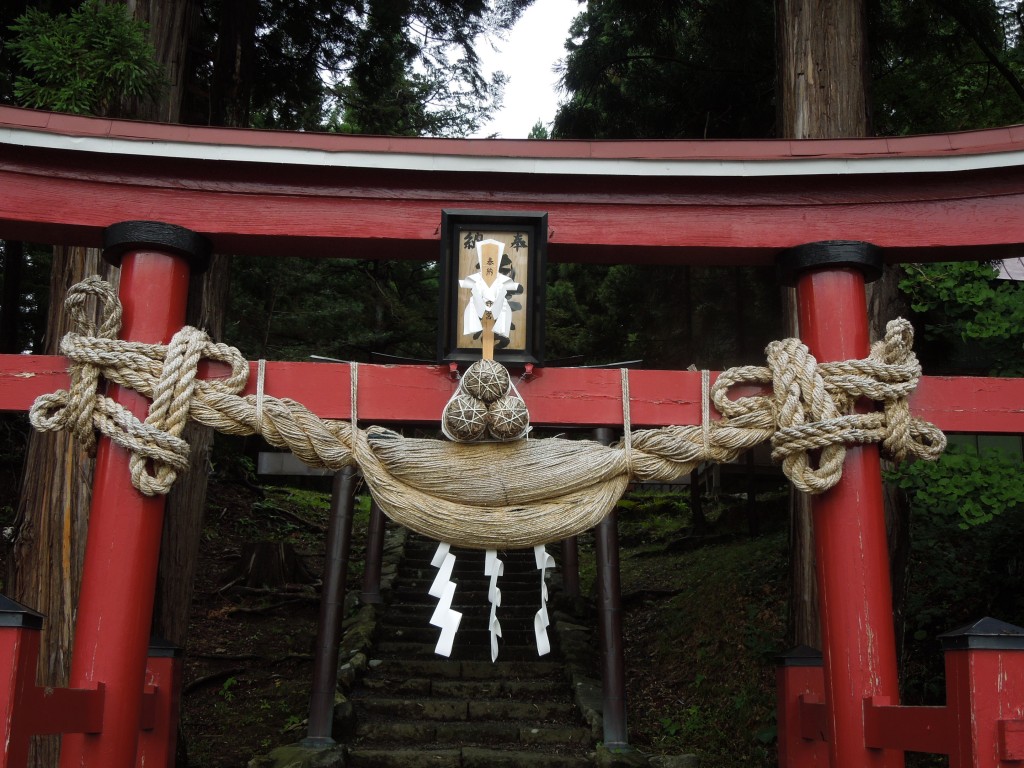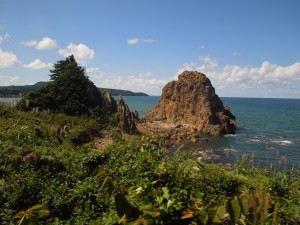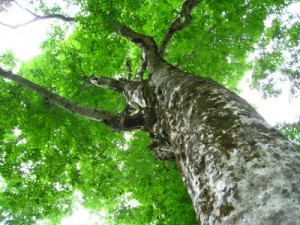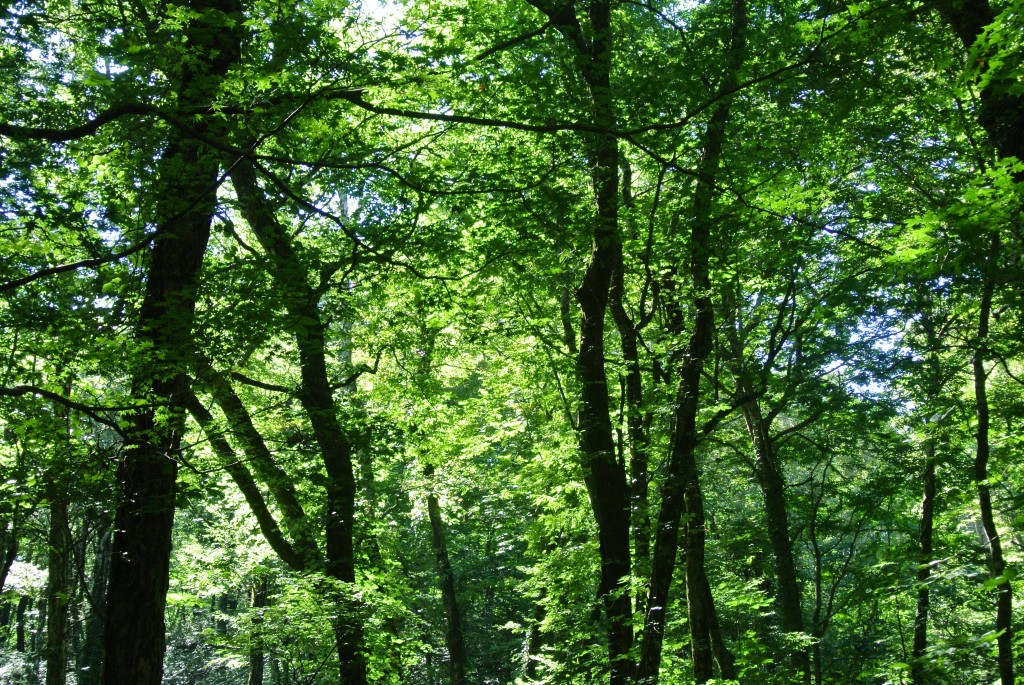
A distinctive style of shimenawa rope decorates this torii with what looks like a picture of a White Kami (Shirakami)
Virgin beech
For the past few days I’ve been touring Shirakawa Sanchi, a wonderful World Heritage Site featuring virgin beech forests covering a mountainous range in northern Tohoku. It’s given me a taste of life on the wild side. A night stranded in a broken-down car; a thunderstorm in the woods; and a close encounter with a black bear at Black Bear Waterfall (Kurokuma no Taki).
I’m writing this blog entry aboard the Resort Shirakami, a spacious tourist train that runs between Akita and Aomori along the western and northern sides of the National Park. The extra large windows afford views of the mountains to one side, and of the attractive rocky coast on the other. The sunset views are not to be missed.

Part of the coastline as seen from the train
In terms of Shinto, the area is as rich in folklore and wayside shrines as it is in apple trees and fresh-flowing streams. Two things stand out. One is that appreciation for the gifts of nature is particularly strong because of the clearly evident cycle of life.
The warm Tsushima Stream collides here with the cold of Siberia, resulting in a moist atmosphere that pours down buckets of rain on the mountains. (In winter the region has one of the world’s highest densities of snow,) The resulting rivers nourish an abundant wildlife before flowing back into the sea, while the ancient beech woods are home to a remarkable diversity of insect and plant life.
Another characteristic I’ve noticed is the oddity of some of the shrines. There are strange features, which reference obscure legends about which even the locals seem unclear. Some have flower and candle decoration – whether this has been adopted from Christianity or is a local characteristic, I’m not sure.
Tohoku was for long an isolated backwater and developed distinctive traditions of its own. It was even too remote for Basho, who travelled to the exotic ‘Deep North’ but never got anywhere near this far.
The White Kami
One of the puzzles I set out to solve was why the area is named Shirakami (White Kami). I thought perhaps it was something to do with snow, but had difficulty in tracking down information about it. Even the Visitors Centers were uncertain. It turns out the name is a recent invention, dating from when the area was put forward as a World Heritage candidate.
The new name resulted from opposition to the building of a major road, which would have cut through the virgin woods. Since the road bore the old name for the area, it was thought a new name would signify a fresh start to conserving the natural resource, befitting designation as a World Heritage Site. Shirakami was chosen in reference to an old kami of the region, Oshirasama.

The cult of Oshirasama was once strong in northern Tohoku, and from what I could gather legends about him centre around an unfortunate love affair involving a princess and a horse. It may have derived originally from worship of Hakusan (White Mountain) in Ishikawa, one of the country’s three sacred mountains along with Mt Fuji and Tateyama. According to the Kokugakuin encyclopedia…
Although Oshirasama is commonly viewed as a tutelary of agriculture and silkworm production, little agreement has been reached regarding the etymology of the name Oshira and the kami’s specific characteristics. The object of Oshirasama worship generally consists of a pair of sticks of mulberry (occasionally bamboo) about 30 cm long, with male and female faces (or a horse’s head) carved or painted in ink on one end. The images are clothed in layers of cloth called osendaku which are added to each year. Many old families enshrine Oshirasama on a kamidana or in the alcove of a main room, and they are also used as ritual implements by religious practitioners such as itako [mediums].
So there we have it… Shirakami Sanchi not only takes you into a world of outstanding natural beauty and wildlife diversity, but it plunges you into a remarkable world of ancient myth and custom, involving the shamanistic roots of ancient Shinto.
It’s well worth a visit!
**************************************************************
For pictures of Oshirasama dolls, see this page.
**************************************************************


Leave a Reply